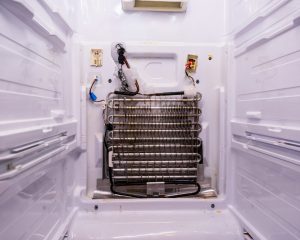Garment finishing is a process of adding value to the fabric/garments. The major functions of a garment finishing department are thread trimming, inspection and ironing.
Scouring removes foreign matter, shearing smoothes fabric and calendering adds gloss to the yarn. Antimicrobial finishes restrict the growth of microbes.
Finishing department receives body from end line quality table of sewing and do inspection according to buyer’s standard setting, also do ironing & sticker/tag attachment. They should also keep daily style-wise target achievement.
Fabric Finishing
Fabric finishing is a series of mechanical and chemical processes done on woven and knitted fabrics to improve their quality and essentially make them presentable for market. These processes can alter the fabrics in various ways like making them soft or stiff and give them different textures. They also increase fabrics resistance to laundering and wear.
Fabric finishes include preparatory treatments to prepare the fabric for additional processing, such as bleaching before dyeing; fabric treatments such as glazing and sizing to alter the hand of the fabric; and other processes such as sanforizing and preshrinking. Various finishing recipes can also add properties to fabrics like flame resistance, anti-bacterial protection, and water repellency.
Other finishing processes are etching, which involves applying chemicals that burn the fibre ends of the fabric to create a pattern; and calendaring, where the fabric is passed between heated rollers under heavy pressure for a smooth finish. Some branded finishes are also available that give fabrics the ability to resist stains.
Thread Trimming
The quality of the sewing thread is important for seam appearance. Aesthetics include color matching, sheen and size. The durability and extensibility of the thread is also critical. Threads must be able to withstand high speed stitching without needle melt and breakage. This can be achieved by using a thread that is not only strong but also formulated to resist melting, such as Nomex a heat resistant aramid fiber.
Another important attribute is its colorfastness. This refers to the ability of the thread to maintain its color when exposed to various variables, such as washing, crocking and sublimation. The best way to achieve this is through the use of polyester threads, which have good colorfastness.
Garment Inspection
Garment inspection is one of the most important quality control activities during garment manufacturing. It involves visually inspecting finished garments at random from fully or 80-90% packed purchase orders to verify their general conformity with instructions/ description and reference tagged samples sent by buyers.
The inspections can be done at various stages of production — before the fabric is spread, during the production period and after completion (final inspection). These inspections help reduce costly mistakes by identifying faults before they are made.
By conducting regular inspections, manufacturers can improve their process and build trust with buyers. In addition, skilled workers are less likely to make mistakes while sewing as they are more familiar with the machines they work on and have better understanding of the requirements of the customer. This also enables them to find solutions more quickly and efficiently, which can save time and money. In addition, the inspections can identify any problems that are causing measurement errors, as these tend to be more difficult to correct than workmanship issues.
Packaging
Garment finishing also includes packaging, which is the process of preparing a garment for shipping. The primary goals of packaging are to protect the product during transit and enhance the garment’s features for sale.
Packaging is usually done at the end of production, and is a highly automated process. The garments are bundled by size, color and style, and the tags are inserted. Some brands use embroidery and screen printing for branding purposes, but these processes are wholly determined by the customer and may be subcontracted to offsite facilities.
Garments can be packaged flat, stand-up or semi-stand up. Each buyer has its own specification in which a specific type of packing is mentioned and any deviation from the specifications can be considered as a defect during final inspection.apparel finishing



